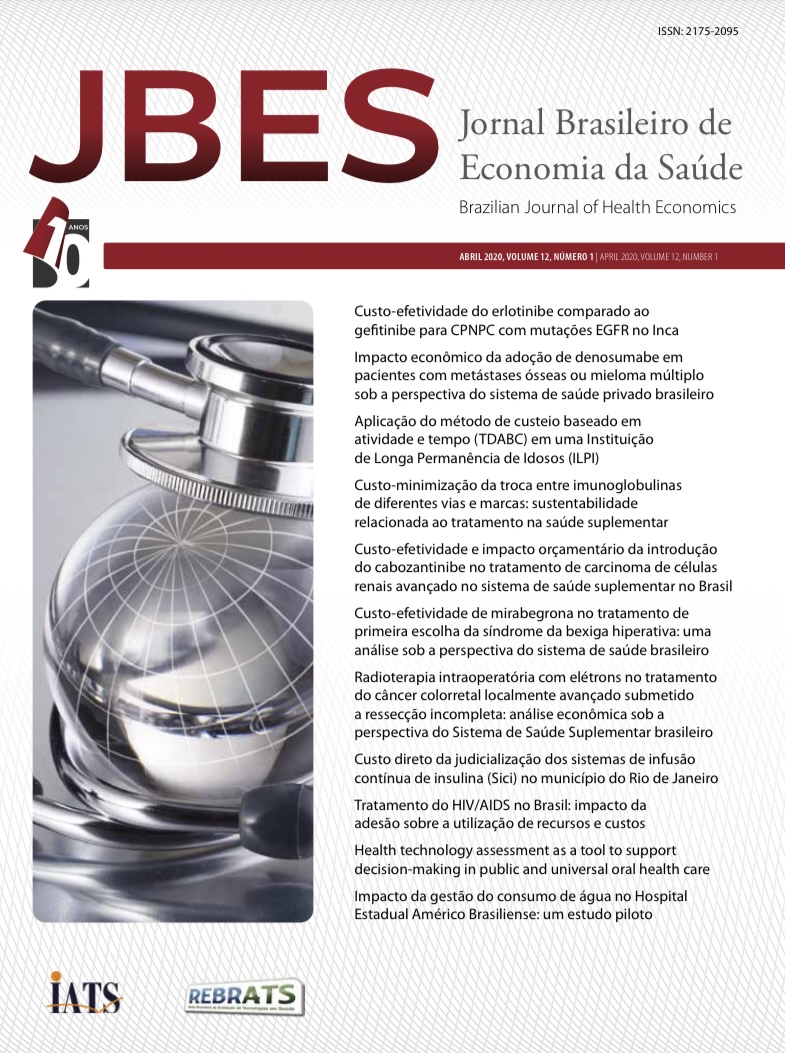Cost-effectiveness of mirabegron as first-choice treatment for overactive bladder syndrome: an analysis from the Brazilian health system perspective
DOI:
https://doi.org/10.21115/JBES.v12.n1.p56-65Keywords:
urinary bladder, overactive bladder, beta-3-adrenergic agonists, antimuscarinics, cost effectiveness analysisAbstract
Objective: To assess the cost-effectiveness of mirabegron as first-choice treatment in adult patients with of overactive bladder (OAB) compared to oral antimuscarinics, usually prescribed for this condition. Methods: A Markov model has been adopted, with monthly cycles and a one-year time horizon, to analyze the cost-effectiveness of mirabegron compared to antimuscarinic agents: tolterodine; oxybutynin; darifenacin; and solifenacin. The model started with patients receiving treatment with mirabegron or one of the comparators and then, they were assigned to five disease severity levels according to micturition frequency and number of incontinence episodes, and within each monthly cycle they could improve, worsen or remain at the same symptom severity level. Results were presented using an incremental cost-effectiveness ratio. Results: Considering the Brazilian pri vate perspective, treatment with mirabegron resulted in a total cost of R$ 2,455.26 and effectiveness parameters at 0.491 and 0.498 (improvement in incontinence severity and micturition, respectively), being more effective than the comparators. Regarding the Brazilian public perspective, treatment with mirabegron resulted in a total cost of R$ 1,396.01 with similar effectiveness estimation. In general, a dominance was observed when mirabegron was compared to tolterodine and a cost-effectiveness profile against the other muscarinic antagonists, considering both health perspectives. Conclusion: Mirabegron has proven to be the best option for OAB first-line treatment with potential cost savings over time for both the public and private health care systems in Brazil.






